Some of the feelings about my late summer/fall garden this year can be broken down into two categories: 1) What took you so long? and 2) Wow, you look so fresh!
I’ve been both irritated by tardiness and appreciative of late-summer beauty, and that’s because there are straightforward, reliable fall bloomers like selinum in my garden, but there are also cases where it’s possible more time is needed to settle into a reliable rhythm/performance. And there are undoubtedly instances where the garden is straddling a zone which the plant is hesitant to commit to.
The worst timing anxiety is when it’s weather-driven. Some winters knock plants back hard and mess with normal growth cycles, and then predicting what a plant will do is just a crap shoot.
Whereas, reliable late-blooming plants like solidago are nothing but a treat when they arrive and are never a cause for early-season worrying.
And then there are the plants you’ve never grown before and don’t know what to expect. Nuttall’s rayless-goldenrod is either in bloom midsummer or late summer, depending on who you read. Obviously more toward late summer/fall here…this year. Sometimes it takes plants a few years to settle into a predictable cycle…that is, unless winter throws them a curveball. And I think it’s safe to say we can expect a lot of curveballs ahead…
One plant that was causing a fair amount of anxiety is an unnamed salvia with a glowing recommendation from the now-closed nursery Flowers By The Sea. For them in Northern California, it blooms all summer. That was therefore my expectation, too, so having it open flowers in September felt like a fail.
Intricately marked flowers, growth habit similar to the clary sage. For a small garden, initially I felt it wasn’t pulling its weight. But…I’ve been won over. It doesn’t have monster star power, but it is a fresh if subtle sight for September.
Great leaves, tall and branching to 3-4 feet, lots of flowering stems. And I have to say another factor in its favor is that, with FBTS going out of business, it’s unlikely to be easily available commercially again. FBTS says it doesn’t set viable seed.
And then there’s the exasperating category: Will they or won’t they bloom before the first frost? The genus salvia is filled with such borderline quandaries. This is the second year for a cross of Salvia involucrata with pulchella by Martin Grantham of the San Francisco Botanical Garden (née Strybing). It didn’t bloom before first frost last year, but I took a cutting (and will need to do so again this year). The leaves are bright green and fresh, and that alone is a rare sight in September. I’m not saying I wouldn’t welcome flowers but am not holding my breath. It seems fairly settled that the best chance for flowers from an involucrata selection in zone 8b appears to be with Salvia ‘Boutin.’
Another virtue of renowned late arrivals is how they hold it together all summer. The lateriflorus asters like ‘Prince’ and ‘Lady in Black have had a strong presence since early summer.
Late but beautiful, my only problem with Calamagrostis brachytricha is I can’t see it. Reputed to grow to a height of 4 feet, mine are maybe at 2 feet. (The photo above is from a dwindling clump that was dug out of the garden and repotted to fatten up again.). The clump in the garden has plenty of room, has made good size and is nearing full bloom — and at another 2 feet in height it would be a gorgeous asset to the late garden. At its current size, planted in the back tier of my stadium seating layout, it’s invisible, screened by Lobelia tupa and solidago. Maybe the small size is an immaturity issue?
I can give the Calamagrostis brachytricha another year to see if that improves their height, or move them to the front garden, where they can be appreciated at whatever height they attain. A worthy replacement for them is the Silver Spike Grass, Achnatherum calamagrostis (aka Stipa calamagrostis) — silver fading to tan, it’s been fabulous all summer long.

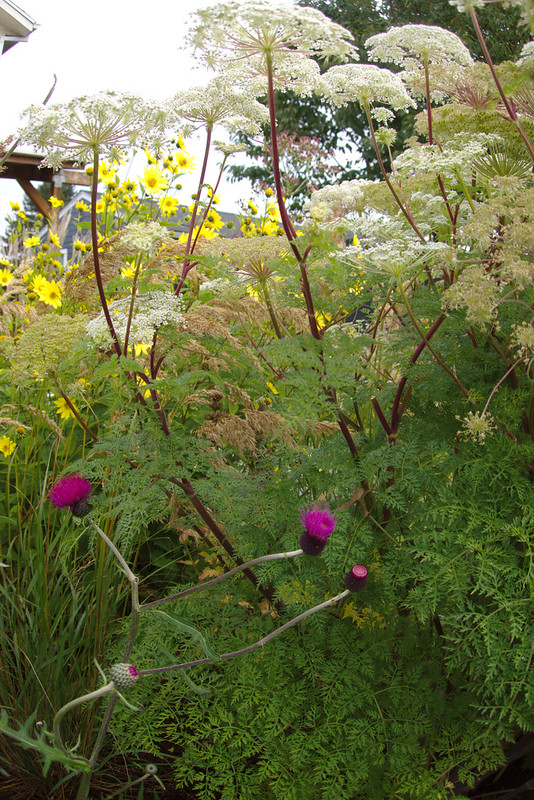

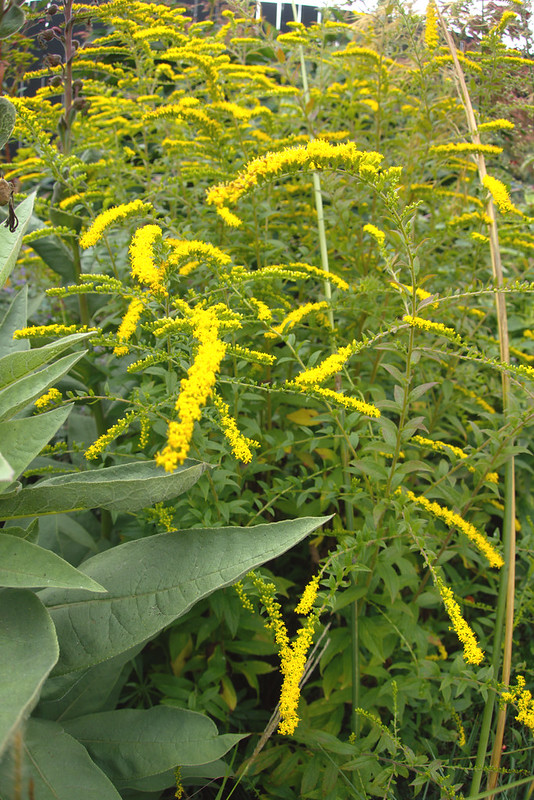


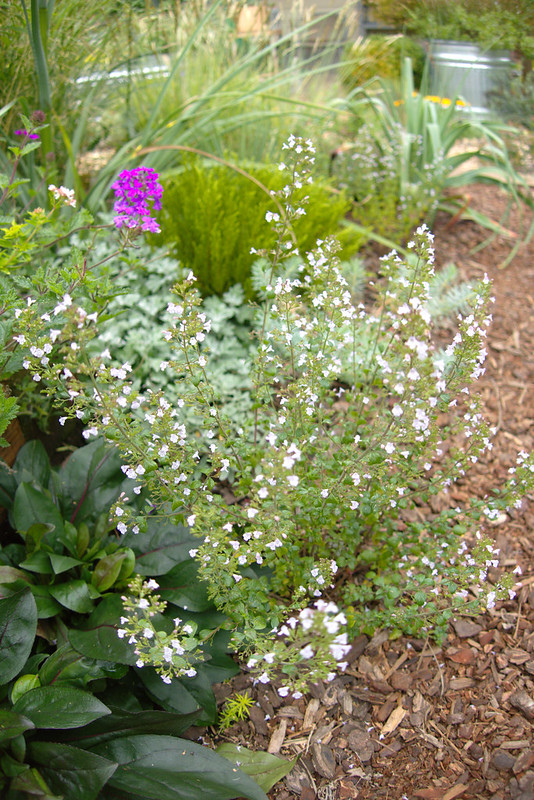


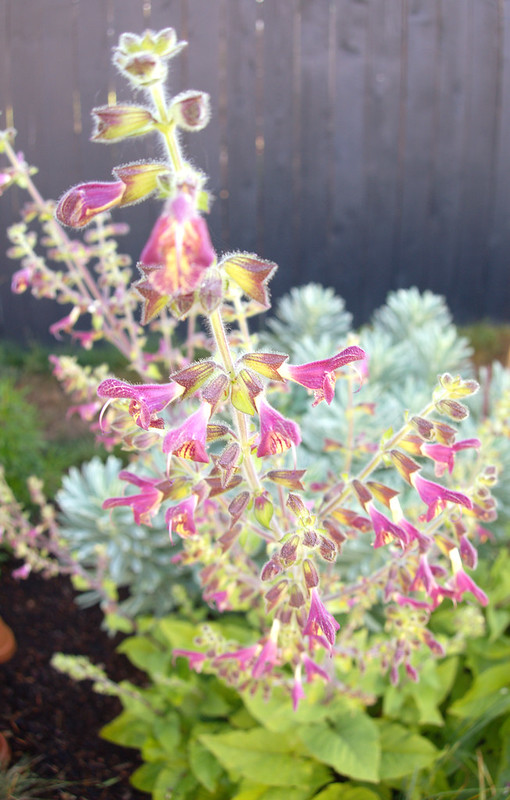
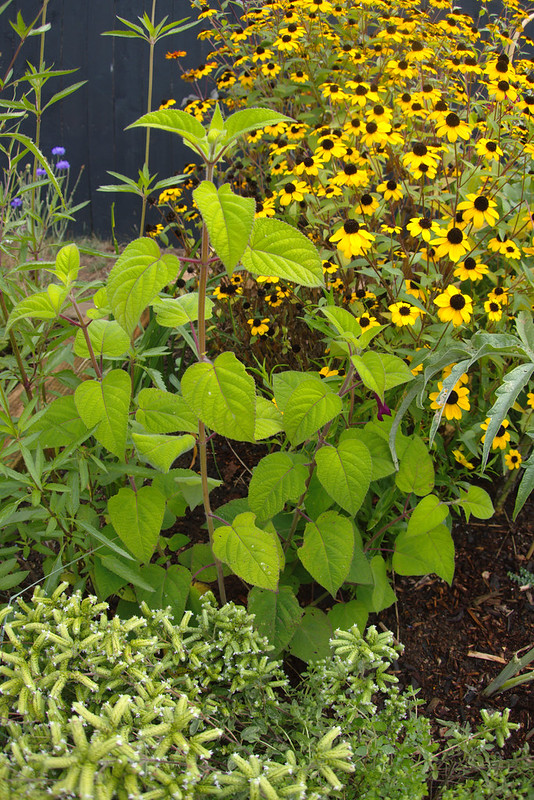
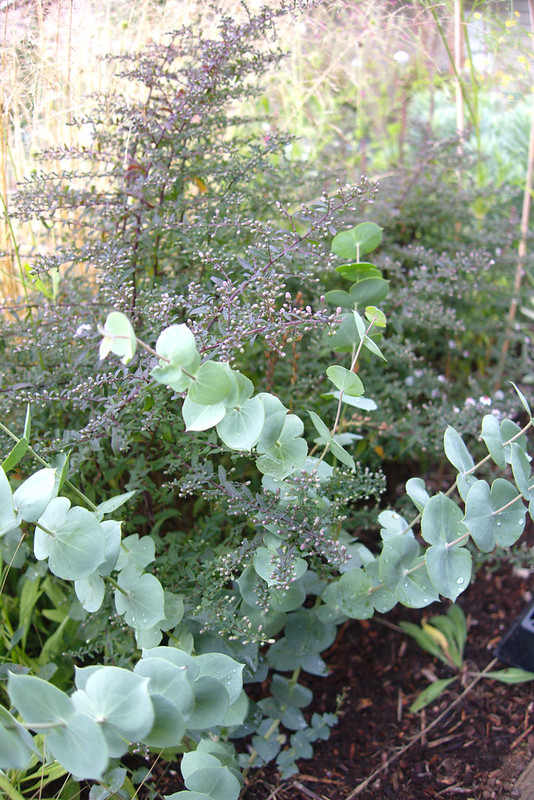
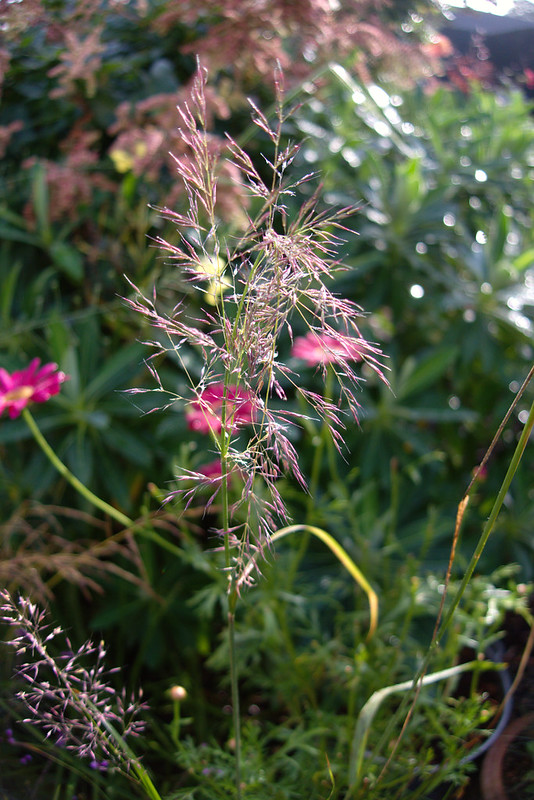

Fall is always a bit of craps shoot to see if everyone will get to fully grow, bloom and mature enough to survive another winter. At least in the PNW you have quite a bit of time yet before frost. We are expecting our first one tonight. For so late in the season the garden does look fresh and full. I love all of your salvias. Not in your face but subtle and unique. I started C. brachytricha from seed a number of years ago. Two of the plants are around 3.5-4 feet while 3 others are considerably shorter. Seems like there is quite a lot of variation within it.
I’ve been thinking of planting Biglowia so it is nice to see it in a garden rather than just catalog shots. I grow Clamintha nepeta ssp. nepeta in my Zone 5A garden in southern Wisconsin. It also does not reseed. I cut it back twice this year to keep it bushy; otherwise it would be a bit floppy. We’re having hotter than typical weather and drought and this plant seems to love both.
Even the slightest weather anomalies seem to throw things off, as was the case down south where cooler spring conditions spilled over into June this year. Assuming El Nino lives up to its expectations, the early onset of our rainy season may throw things off-kilter this fall too but we have nothing like the abrupt season-changers of first frost and real winter conditions that you face. I hope some of your plants come through with a bountiful fall display before Mother Nature declares the season over for you.
I love your concrete tube planter and Bigelowia nuttallii behind it. Bigelowia is a plant I never heard of before. It so chartreuse’y and bright, no blooms are necessary. Another plant to look for next gardening season.
It is special to have an unnamed Salvia with unique color flower. A lovey shade of… grape, maybe?
Is it white-flowered Gaura I spot behind the schizostylis bloom? What is your experience with that plant? I just got one. Killed two other Gaura in the past but figured maybe I picked a bad spot for it. Third time should do it, right?
I continue to be surprised by how lush your garden looks. I really shouldn’t be surprised, considering your summers are much milder and wetter (?) than here.
I also love that concrete tube. Where did you find it?
@Elaine, reassuring to know that the calamagrostis is variable. Already your first frost, wow!
@Linda, the calamint is such a great plant, right? I hope it likes it here — seems a little iffy so far. Thanks for the input!
@Kris, the forecast is showing possibility of some rain this week. I’ll be out of town so that would be most welcome and help to prolong the garden well into fall.
@Chavli, isn’t it weird how plants get on our radar? I may have seen biglowii at Red Butte Bot. Garden in Utah but who knows. The gaura is doing really well here in its second year — nice form, not floppy but it’s notoriously short-lived so not sure what to expect in the third year.
@Gerhard, no rain since early May but the temps are fairly cool, which makes a huge difference. Just occasional, infrequent spikes into the 80s. The concrete tube was probably discovered in a field! Wish I know where to find more…
The Bigelowia is lovely. Reminds me of some of the Ericarmeria species from the dryer parts of the US and Oregon. Also lovely are the little green chains of bloomed oregano flowers in your photo of the Salvia pulchella x involucrata. Which cultivar is that? It’s a really nice effect. I’ve got a Salvia reptans ‘Blue Willow’ that I’ve been waiting to see if it will bloom before frost. The buds are just starting to appear.
@Hi Jerry — that oregano is the plain culinary kind I bought as quick fill but loved the effect too much to part with. My Salvia reptans hasn’t bloomed yet, but a ‘West Texas Form’ up the coast 20 miles possibly in a slightly warmer pocket (zone 9?) is in bloom.